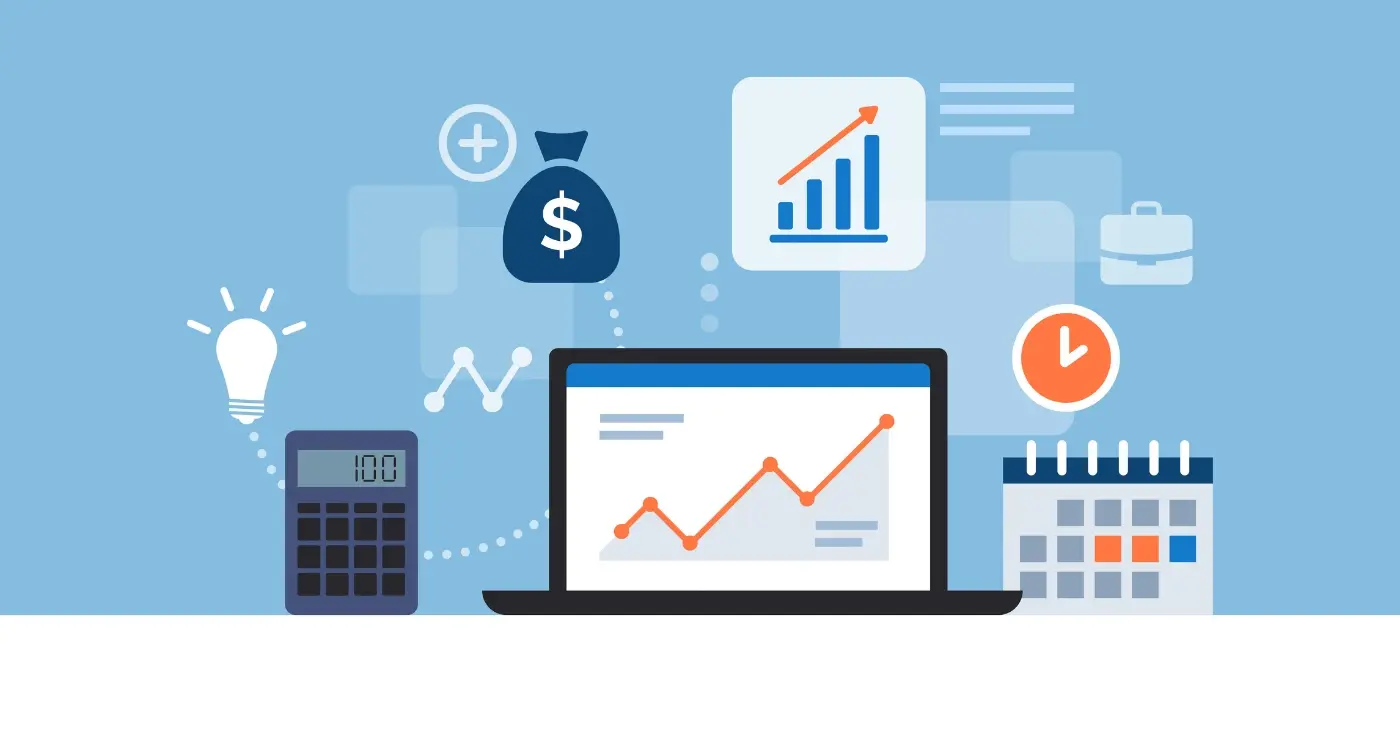How Do I Budget For Long Term Mobile App Maintenance?
Launching a mobile app is just the beginning of your journey. Like a new car that needs regular servicing and occasional repairs, your app requires ongoing care and attention to stay running smoothly. At Glance, we've guided countless businesses through the sometimes challenging waters of app maintenance costs and total cost of ownership (TCO), and we understand the uncertainty you might be feeling about budgeting for your app's future.
The true cost of an app isn't in its creation, but in its continuous evolution to meet user needs and technological demands.
Whether you're a startup founder worried about stretching your budget or an established business planning your next digital venture, understanding how to budget for long-term mobile app maintenance is crucial. Think of it like planning for a house's upkeep - you need to consider routine care, unexpected repairs, and periodic upgrades to maintain its value.
In this comprehensive guide, we'll walk you through everything you need to know about planning and budgeting for your app's maintenance journey. We'll break down the components that influence mobile app TCO, share practical strategies for managing maintenance costs, and help you create a sustainable plan that won't leave you scrambling when updates or fixes are needed.
Drawing from our experience working with apps across various industries, we'll provide you with clear, actionable insights that go beyond basic maintenance calculations. By the end of this guide, you'll have the knowledge and confidence to build a realistic maintenance budget that ensures your app's long-term success.
Understanding Mobile App Total Cost of Ownership
When you're planning a new mobile app, it's a bit like buying a car - the initial price tag isn't the whole story. Just as you need to consider fuel, insurance, and servicing for your vehicle, your app requires ongoing investment to keep it running smoothly and securely.
Total Cost of Ownership (TCO) is a comprehensive way to understand what your app will cost throughout its lifetime. Think of it as a financial roadmap that helps you avoid any nasty surprises down the line.
What Makes Up Your App's TCO?
- Initial development and design costs
- Server and hosting infrastructure
- Regular updates and bug fixes
- Security patches and monitoring
- User support and feedback management
- Performance optimisation
- Third-party service subscriptions
- Analytics and monitoring tools
We've seen many businesses focus solely on the upfront development costs, only to struggle with unexpected maintenance expenses later. It's like buying a gorgeous house without budgeting for the utilities and repairs - not ideal!
A good rule of thumb is to expect your annual maintenance costs to be roughly 15-20% of your initial development investment. For example, if your app costs £100,000 to build, you should plan for £15,000-£20,000 in yearly maintenance costs.
Understanding your TCO from the start helps you make informed decisions about features, technology choices, and long-term sustainability. For a deeper dive into these considerations, our guide on the hidden costs of mobile app ownership explores the often-overlooked expenses that can impact your budget. It's all about finding the sweet spot between your ambitions and your budget's reality.
Key Factors That Drive App Maintenance Costs
When it comes to understanding app maintenance costs, think of your mobile app like a car - different factors affect how much you'll need to spend to keep it running smoothly. Let's explore the key elements that influence your app's long-term maintenance budget.
Technical Architecture and Complexity
The more complex your app's architecture, the higher your maintenance costs will be. An app with multiple integrations, real-time features, or complex databases naturally requires more attention than a simpler application. For instance, a social networking app with chat features and media sharing typically demands more maintenance than a basic calculator app.
User Base and Platform Support
Your app's total cost of ownership (TCO) is directly tied to your user base size and which platforms you support. Supporting both iOS and Android means maintaining two separate codebases, while a larger user base means more server resources, customer support, and potential scaling challenges.
Another crucial factor is the frequency of operating system updates. When Apple or Google release new versions, you'll need to ensure your app remains compatible - something we've seen cause unexpected maintenance spikes for many of our clients.
Create a detailed feature inventory of your app and rank each feature by complexity. This will help you anticipate which elements might require more maintenance attention and budget accordingly.
Third-party integrations also play a significant role in ongoing costs. Each external service your app relies on might require updates or replacements over time, affecting your maintenance budget. For more detailed insights into these ongoing expenses, check out our comprehensive guide on what are the maintenance costs for a mobile app. The key is finding the right balance between functionality and maintainability while keeping your app maintenance costs manageable.
Breaking Down Regular Maintenance Tasks
Understanding what goes into regular app maintenance can feel a bit like trying to solve a puzzle without having all the pieces. As app developers who've maintained hundreds of applications, we know firsthand how overwhelming it can feel. Let's break down these tasks into digestible chunks that make sense.
Essential Maintenance Categories
Think of app maintenance like caring for a car - some tasks need attention daily, while others are more periodic. Here's what typically needs regular attention:
- Bug fixes and crash reports (typically weekly checks)
- Operating system updates and compatibility testing (every few months)
- Security patches and vulnerability scanning (monthly)
- Performance optimisation and speed improvements (quarterly)
- User feedback implementation (ongoing)
- Analytics monitoring and reporting (weekly or monthly)
- Server maintenance and database optimisation (monthly)
- Third-party API updates (as needed)
Priority Levels
Not all maintenance tasks carry the same urgency. We've found that categorising them helps our clients better allocate their resources. Critical security updates, for instance, need immediate attention (much like a flat tyre!), while user interface improvements can often wait for your next scheduled update.
Remember, maintenance isn't just about fixing what's broken - it's about preventing issues before they occur. Just as you wouldn't wait for your car to break down before getting it serviced, proactive app maintenance helps avoid costly emergency fixes down the road. In the next section, we'll explore how to budget for these various tasks effectively.
Planning Your Monthly Maintenance Budget
After years of helping businesses maintain their mobile apps, we understand how daunting it can be to plan a monthly maintenance budget. It's rather like planning for a car's upkeep - you know you'll need regular servicing, but you also want to be prepared for unexpected issues.
The Basic Monthly Framework
A good starting point is to allocate 15-20% of your initial app development costs annually for maintenance. For example, if your app cost £100,000 to develop, you should set aside £15,000-£20,000 per year, or approximately £1,250-£1,667 monthly. This helps manage your mobile app TCO (Total Cost of Ownership) effectively.
The most expensive app maintenance isn't the regular upkeep - it's the cost of doing nothing until something breaks
Breaking Down Monthly Allocations
We recommend splitting your monthly maintenance budget into three main categories: Essential updates and bug fixes (50%), performance optimisation (30%), and feature improvements (20%). This distribution helps ensure app maintenance costs remain manageable while keeping your app healthy and competitive.
Remember to factor in seasonal fluctuations - just as you might need extra heating in winter, your app might need additional resources during peak usage periods. For e-commerce apps, this could mean allocating extra budget during holiday seasons, while fitness apps might need more attention around New Year when usage typically spikes.
Keep your budget flexible and review it quarterly. As your user base grows or new technologies emerge, you may need to adjust your allocations. The key is to stay proactive rather than reactive with your maintenance strategy.
Strategies for Reducing Long-Term App Maintenance Costs
We understand that managing app maintenance costs can feel like trying to keep a lid on a bubbling pot. After working with hundreds of businesses, we've discovered some clever ways to keep those costs under control without compromising your app's quality.
Smart Development Practices That Save Money Later
Think of your app like a house - the better you build it initially, the less maintenance it'll need down the road. Our experience shows that investing in quality code architecture early on can reduce maintenance costs by up to 40% over time.
- Use modular code architecture for easier updates and bug fixes
- Implement automated testing to catch issues before they reach users
- Choose stable, well-supported frameworks and libraries
- Document everything thoroughly to save future debugging time
- Optimise assets and code for better performance
Preventative Maintenance Approach
Just like regular check-ups at the dentist prevent costly procedures later, scheduling regular maintenance prevents expensive emergency fixes. We've found that apps with regular health checks typically need 60% fewer emergency interventions.
Remember that brilliant feature you're excited to add? Before jumping in, consider whether it truly adds value for your users. We often see apps become needlessly complex, leading to higher maintenance costs. To understand what can go wrong during development that affects future maintenance, our article on 7 reasons your mobile app development is struggling provides valuable insights. Sometimes, the best strategy is keeping things beautifully simple.
By focusing on proactive maintenance and smart development practices, you can significantly reduce your long-term costs while keeping your app running smoothly. It's rather like maintaining a car - regular oil changes are much cheaper than replacing the engine!
When to Scale Your Maintenance Budget
Just like a growing child needs new clothes, your app will eventually outgrow its current maintenance budget. Understanding when to scale up your app maintenance costs is crucial for long-term success.
Signs It's Time to Increase Your Budget
The most obvious indicator is user growth. When your user base expands significantly, your app requires more server resources, customer support, and performance monitoring. Think of it like moving from a cosy flat to a larger house - your utility bills naturally increase with more space to maintain.
Another clear signal comes from user feedback and behaviour. If you're noticing more bug reports, slower performance, or increased crash rates, it's likely time to invest more in your mobile app TCO. These issues often emerge when your current maintenance resources are stretched too thin.
Strategic Scaling Approaches
Rather than waiting for problems to arise, we recommend a proactive approach to scaling your maintenance budget. Consider increasing your budget by 15-20% when you reach key milestones, such as doubling your user base or implementing major new features.
Remember, scaling doesn't always mean dramatic increases. Sometimes, small, incremental adjustments to your app maintenance costs can prevent larger issues down the line. It's similar to regular car servicing - spending a bit more on routine maintenance can help avoid costly repairs later.
Create trigger points for budget reviews based on specific metrics, such as user count or revenue thresholds. This helps make scaling decisions more objective and planned rather than reactive.
Building a Maintenance Reserve Fund
Just as you'd save for a rainy day, setting aside money for your app's future needs is crucial for long-term success. Think of your maintenance reserve fund as your app's safety net - it's there to catch you when unexpected challenges arise.
How Much Should You Set Aside?
After working with hundreds of apps over the years, we've found that a healthy maintenance reserve fund typically amounts to 15-20% of your initial development costs. For example, if your app cost £50,000 to develop, aim to build a reserve of £7,500-£10,000.
However, every app is different, and your specific needs may vary. The key is to start building your fund early and consistently.
Smart Ways to Build Your Reserve
- Allocate a fixed percentage of monthly revenue
- Set aside a portion of your marketing budget
- Reinvest cost savings from efficiency improvements
- Include reserve funding in your initial investment planning
- Consider setting up a separate business account for maintenance funds
Remember the tale of the ant and the grasshopper? The ant prepared for winter while the grasshopper played. In the app world, those who build a robust reserve fund are like the wise ant - ready for whatever challenges come their way.
The beauty of a maintenance reserve fund is that it gives you peace of mind and the agility to respond quickly to critical issues. Whether it's an urgent security patch or an unexpected operating system update, you'll have the resources ready when you need them most. For a comprehensive breakdown of what these unexpected costs might include, our guide on what business leaders need to know about mobile app development costs can help you prepare more effectively.
Creating a Sustainable Maintenance Schedule
When it comes to mobile app maintenance, consistency is absolutely key. Think of your app like a garden - it needs regular care and attention to flourish, rather than sporadic bursts of intensive work when problems arise.
A sustainable maintenance schedule isn't about doing everything at once - it's about doing the right things at the right time to keep your app healthy and your costs predictable.
Structuring Your Maintenance Calendar
To manage app maintenance costs effectively, we recommend breaking down your schedule into daily, weekly, monthly, and quarterly tasks. Daily checks might include monitoring crash reports and user feedback. Weekly tasks often involve performance monitoring and small bug fixes, while monthly activities could include security patches and analytics reviews.
Balancing Proactive and Reactive Maintenance
Your maintenance schedule should account for both planned updates and unexpected issues. We've found that allocating about 70% of your maintenance time to proactive tasks and reserving 30% for reactive maintenance strikes a good balance. This approach helps control your mobile app TCO (Total Cost of Ownership) while ensuring you're prepared for unexpected challenges.
Remember to factor in regular check-ins with your development team or maintenance partner. These reviews help ensure your schedule remains aligned with your app's evolving needs and user expectations. For a better understanding of the full scope of expenses involved, our detailed breakdown in the hidden costs of mobile app development most businesses miss can help you plan more comprehensively. Don't forget to build in some flexibility - technology moves quickly, and your maintenance schedule should be adaptable enough to accommodate new requirements or opportunities for improvement.
The goal is to create a rhythm that feels natural and sustainable, rather than a rigid schedule that becomes a burden. When done right, your maintenance routine should feel like a natural part of your app's lifecycle.
Conclusion
Planning for long-term mobile app maintenance might feel overwhelming at first, but it's absolutely essential for your app's sustained success. Think of it like maintaining a car - whilst the initial purchase is significant, it's the ongoing care that keeps it running smoothly for years to come.
Throughout this guide, we've explored the various aspects of budgeting for app maintenance, from understanding total cost of ownership to creating sustainable maintenance schedules. Remember that every app is unique, and your maintenance needs will evolve as your user base grows and technology advances. Just as you wouldn't expect a vintage Mini Cooper to have the same maintenance requirements as a modern Tesla, different apps require different levels of care and attention.
The key takeaway is that proactive maintenance planning isn't just about fixing problems - it's about creating opportunities for growth and improvement. By setting aside appropriate funds, establishing clear maintenance schedules, and building a reserve fund, you're not just maintaining your app; you're investing in its future.
We know from experience that apps that receive regular, well-planned maintenance tend to have happier users, fewer critical issues, and longer lifespans. Whether you're managing a small business app or a complex enterprise solution, the principles we've discussed will help you create a sustainable, realistic maintenance budget that protects your investment and supports your app's growth.
Remember, successful app maintenance isn't about spending the most money - it's about spending wisely and planning ahead. By implementing the strategies we've discussed, you'll be well-equipped to keep your app running smoothly for years to come.
Share this
Subscribe To Our Learning Centre
You May Also Like
These Related Guides

What Financial Metrics Matter in App Feasibility Planning?

How Much Does It Cost To Add AI Features To My Mobile App?



